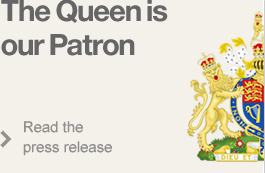John FitzRobert (c. 1190-1240) held estates distributed across two regions of England, the far north along the Scottish border, and East Anglia and Essex. He accordingly had ties with the two main, but largely separate, groups of barons who rose in opposition to King John in 1216.
John’s ancestors had a long tradition of service to the Angevin monarchy. His grandfather Roger FitzRichard through his military prowess had earned the favour of Henry II, who in 1158 granted him the castle of Warkworth in Northumberland and a few years later the castle and feudal honor of Clavering in Essex. John’s father, Robert, who came of age in 1191, served as sheriff of Northumberland in 1203 and received various grants of manors from John in 1204 and 1205. Robert was a man of wealth and made numerous additions to the great castle at Warkworth which are still visible in the castle’s fabric today, notably the Carrickfergus tower and the western part of the south wall.
John, who succeeded his father in 1212, took over from the latter his established position in northern society, numbering among his associates Eustace de Vesci, William de Mowbray and Peter de Brus. However, he also spent time in East Anglia, where his great-grandfather had acquired estates through his marriage to a daughter of Roger Bigod, earl of Norfolk, and his father had strengthened the family’s position further by an almost equally valuable marriage to the daughter of the Norfolk landowner, William de Chesney. In 1213 and 1215 John served as sheriff of Norfolk and Suffolk.
Understandably, in the light of his and his family’s long tradition of royal service, John was a relative latecomer to the baronial cause. It was nonetheless a tribute both to his high standing and the strength of his ties in northern society that he was chosen one of the Twenty Five. After the renewal of hostilities in the autumn of 1215 he joined his associates in waging war against King John, but after the baronial defeat at Lincoln in May the following year he was among the earliest to offer submission to Henry III’s Minority government. He served as sheriff of Northumberland from 1224 to 1227.
John married twice, his first wife, whom he wedded in about 1218, being Ada de Balliol, through whom he acquired the lordship of Barnard Castle in County Durham, and his second wife Cecily de Fontaines. When he died in 1240, Matthew Paris, the chronicler of St Albans Abbey, wrote: ‘In this year died John FitzRobert, a man of noble birth and one of the chief barons of the northern provinces of England’.
By Professor Nigel Saul, Royal Holloway, University of London.
Featured Article
When you were kind enough to ask me to speak this evening I was Master of the Rolls and as such ex officio Chairman of the Magna Carta Trust. The Magna Carta Trust is a charitable body devoted to increasing knowledge of and...
Read on...Recent Articles
- Magna Carta's American Adventure
- 800th anniversary of Bristol...
- Bristol 800 concert and...
- Emancipation and Magna Carta
- Terrorism and Tolerance -...
- Magna Carta
- Magna Carta Benches mark...
- ABA Magna Carta Memorial...
Stay updated
If you would like to keep informed about the work of the Magna Carta Trust and our partners, please sign up to the newsletter below.
Become a Supporter
There are a number of significant supporter opportunities. Register your interest early to ensure the widest range of options.
Find out more




